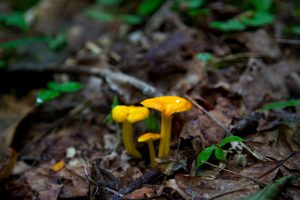Despite the weirdly warm weather we’ve been having over the past month, fall is in full swing and the first day of winter will soon be upon us. With the changing of the seasons comes the leaves–lots of them!
For those of us with a yard, leaf clean up can be one of the most dreaded fall chores. So why not save yourself the trouble, while helping to save our natural world at the same time!
In our forests, the layer of leaves covering the ground is a crucial part of the ecosystem, important to both flora and fauna.
With the aid of decomposers such as fungi and bacteria, dead leaves are broken down and help return vital nutrients into the soil for use by other plants. They also act as a protective barrier, insulating roots during colder weather and shielding young plants from harsh frost and snow.
Fallen leaves provide important habitat for many of our native animals as well!
Salamanders, turtles, snails and even butterfly larva use leaf litter as a place to shelter during the fall and winter. Many invertebrates, such as worms and millipedes, will also feed on decaying leaves. And some of our furry friends, like squirrels and chipmunks, collect leaves to insulate their winter hideouts.
- Gray Squirrel “Drey” (nest)
- Red Backed Salamander
While not all of us live in or near a forest, our own gardens and lawns can also reap benefits from all of those fallen leaves.
Instead of raking them all up, you can chop them up into finer bits using your lawn mower and leave them where they lay–this will aid in the breakdown process and provide your grass with natural fertilizer. If you don’t like the sight of leaves on your lawn, you can also rake them into garden beds or natural areas near your home. This will act as a natural mulch to protect the plants, while providing habitats for the critters that share your neighborhood!




